The life of Hanoi residents on the central streets after 1985 is captured through the works of American photographer William E. Crawford.

This image of a newsstand at 222 Hang Bong Street in 1986 is part of Crawford’s series, showcased in two exhibitions: “Hanoi 1985-2015 – The Forgotten Years” at 14 Phan Huy Ich and “Then and Now, Changes in Hanoi Streets” at 2 Hang Bun. The event is organized by Manzi Art Space and Art Vietnam Salon Gallery, running from April 26 to May 20.
William Crawford is one of the first Western photographers to visit Northern Vietnam after the war ended. He first arrived in Hanoi in 1985 with a group of filmmakers and American veterans, returning multiple times afterward. Crawford documented street scenes and daily life to observe the changes and development of the capital in the post-war era. His works have been exhibited in both the United States and Vietnam and are included in the photo book Hanoi Streets 1985-2015: In the Years of Forgetting, published in 2018.
Crawford grew up in Chicago, with both his grandfather and father being amateur photographers. He began taking photographs in elementary school and graduated from Yale University.
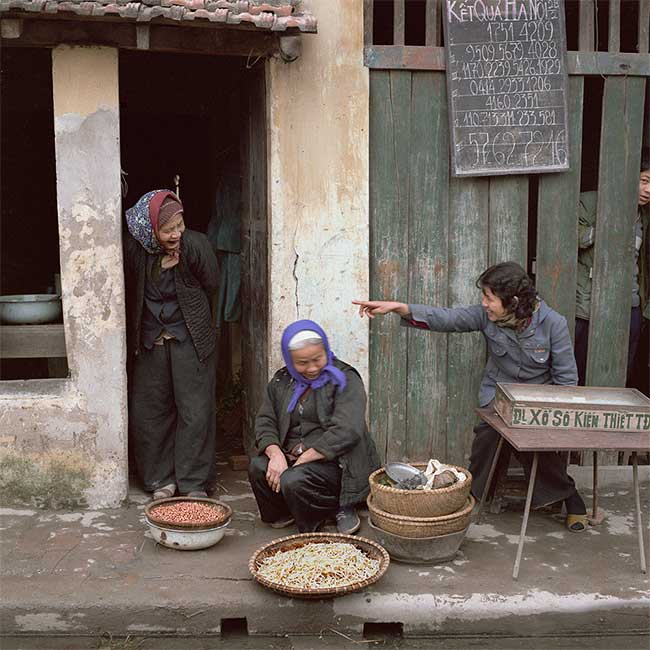
Street vendors in front of 26 Ngoc Ha Street in winter 1986. In an interview with Culture Trip in 2018, Crawford mentioned that during his first visit to Hanoi, he faced challenges with material conditions and the weather. He observed mice in the hotel dining room, frequent power outages, noisy air conditioning despite the heat, salty food, and ants in his rice.
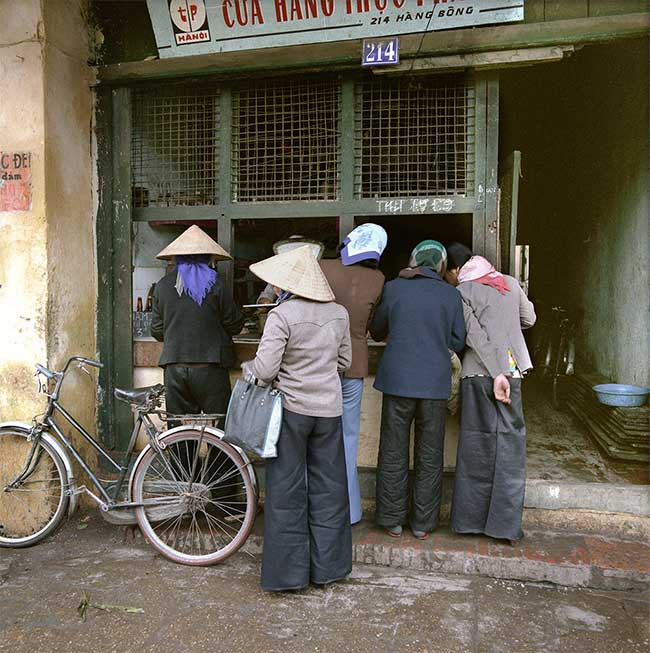
A trading store at 214 Hang Bong Street in 1986. The photographer often wandered the streets of Hanoi with a large-format camera and tripod. Unable to speak Vietnamese, he employed two interpreters from the Foreign Press Center, Nguyen Quang Duy and Vu Binh.
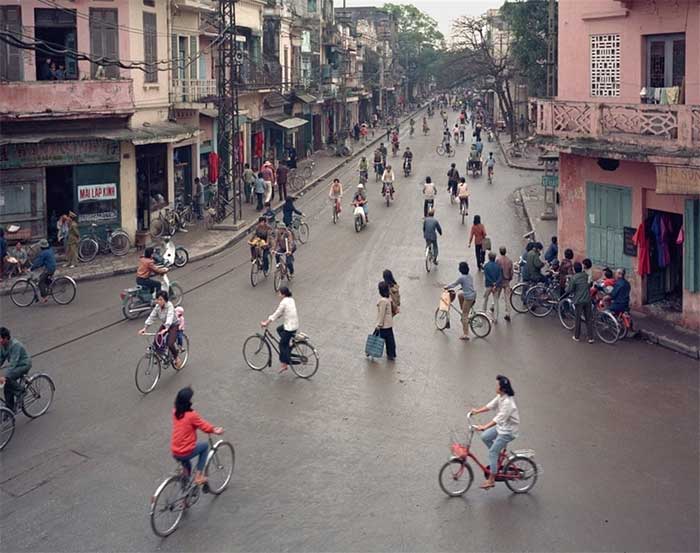
Hang Gai Street in 1988, primarily bicycles, with a few motorcycles.
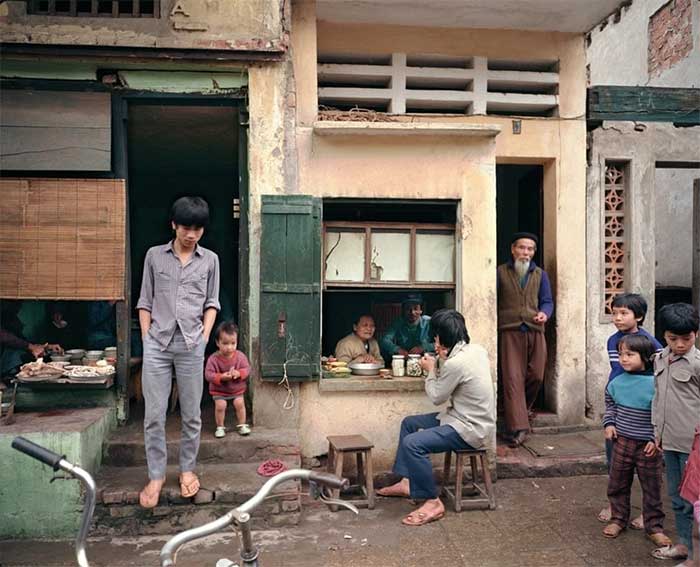
In front of a restaurant at 72 Ma May Street in 1988. During his subsequent visits, he frequently returned to old locations, especially the Old Quarter, to document the changes.
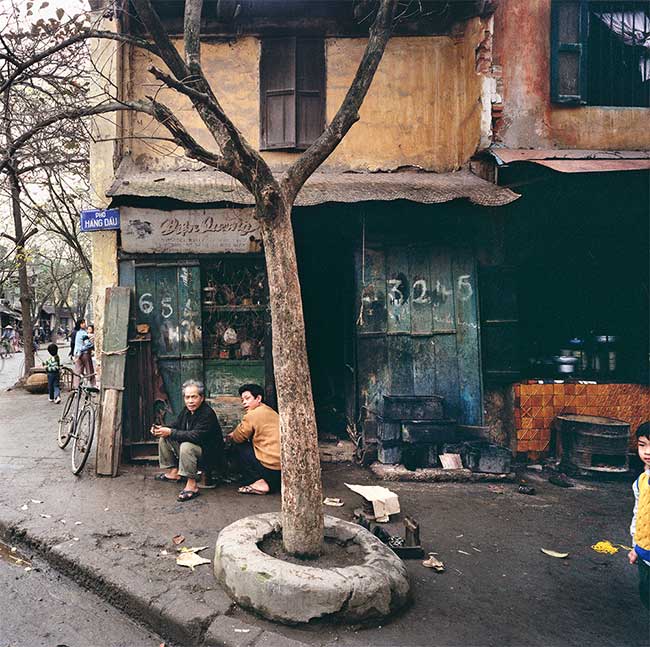
In front of an electrical shop on Hang Dau Street in 1988.
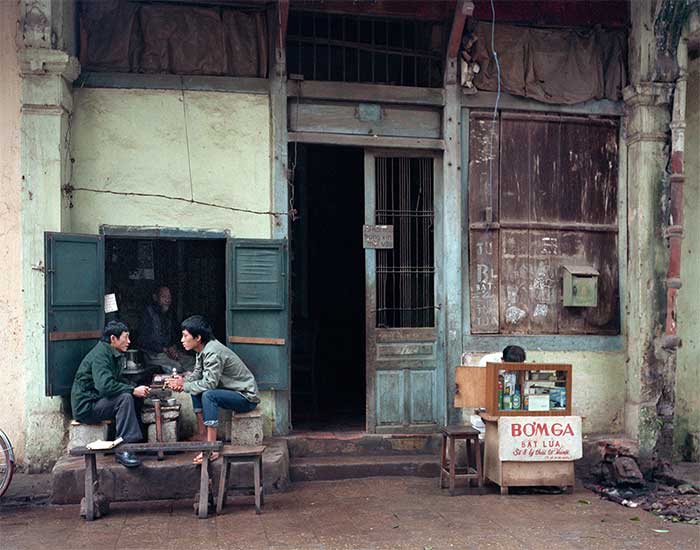
Two men drinking tea next to a gas lighter stand at 8 Ly Thai To Street in 1988.
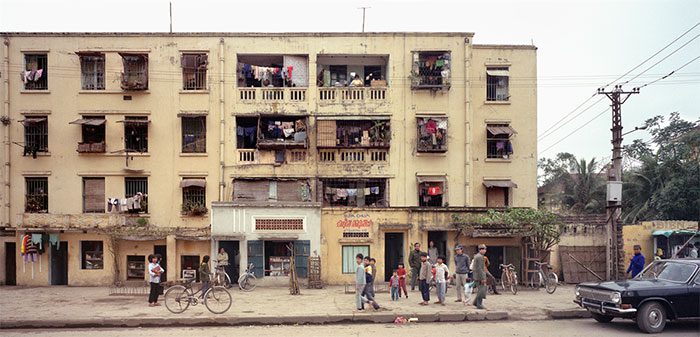
127 Giang Vo Apartment Complex in 1988. A representative from the organizing committee noted that the photographs were taken by the photographer on film and printed on art paper.
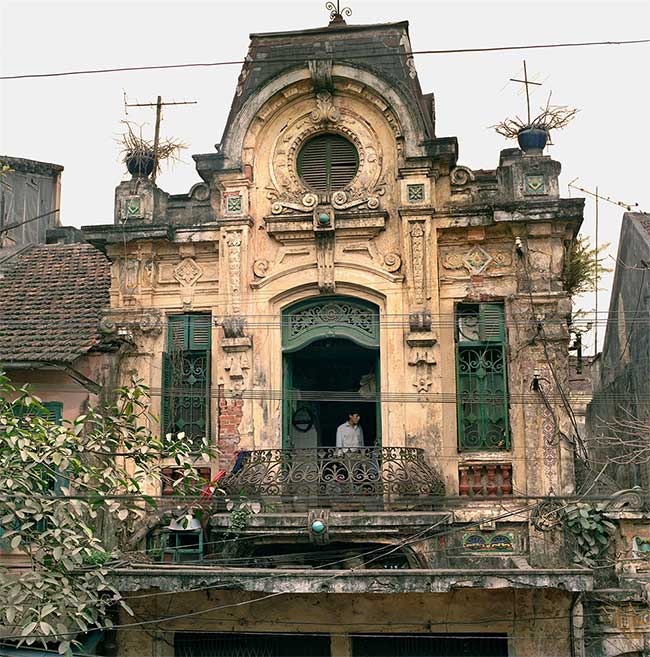
The balcony of an old house at 57 Hang Bo Street in 1991.
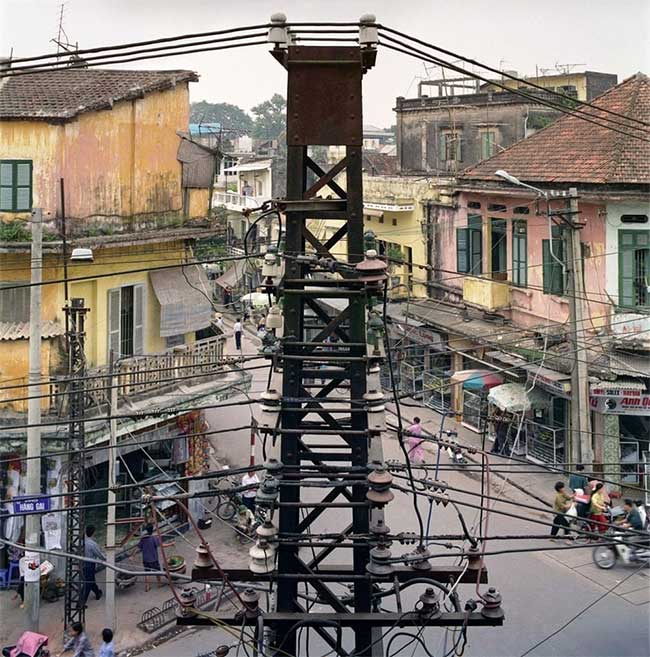
A power pole at the intersection of Hang Gai Street in 1994.
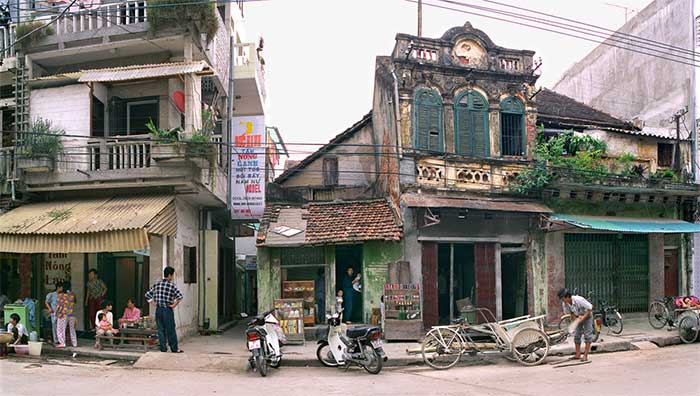
House number 38 on Ma May Street in 1994. In the book Hanoi Streets 1985-2015: In the Years of Forgetting, the photographer remarks on how much Hanoi changed during the Doi Moi period, with cars and motorcycles gradually replacing bicycles, neon lights replacing oil lamps, and many high-rise buildings emerging, resulting in noisier streets and an increase in tourists.
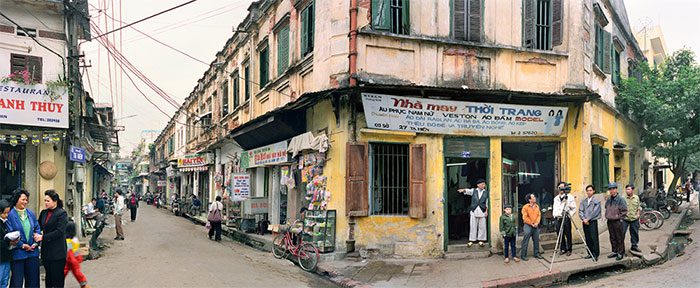
Scene at 27 Ta Hien Street in 1999.





















































